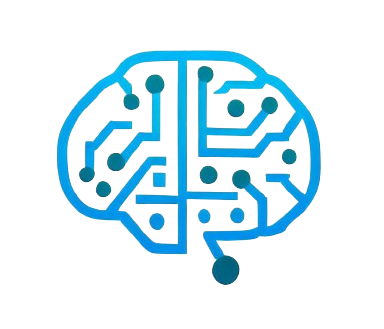The advent of machine learning has revolutionized various industries by providing sophisticated analytic tools to process extensive data sets and extract meaningful patterns. The stock market, with its vast array of fluctuating variables, is a particularly fertile ground for machine learning applications. Financial experts and data scientists alike are leveraging these technologies to predict market trends with increasing accuracy.
Machine learning in stock market analysis blends traditional quantitative analysis with the power of modern computational technologies. As financial markets become more complex and integrated, the volume of data that needs to be processed grows exponentially. Machine learning algorithms thrive on big data, tirelessly analyzing price movements, trading volumes, and financial news with more depth and precision than humanly possible.
The Mechanism of Predictive Analytics in Finance
Delving deeper into the mechanism of predictive analytics in finance through the lens of machine learning reveals a sophisticated, multi-layered approach to interpreting market data. The core objective is to develop predictive models — algorithms that are capable of detecting and learning from patterns and indicators that historically lead to certain market responses. To achieve this, data scientists feed machine learning algorithms with a wealth of historical stock market information, which may include not just trading figures such as prices and volumes but also a diverse set of variables ranging from company fundamentals to macroeconomic indicators.
 This historical data forms the bedrock of the predictive model’s understanding of the stock market. But the data itself is multifaceted — company earnings reports, balance sheets, consumer sentiment indices, inflation rates, currency fluctuations, and even political stability come into play. In recent years, the sphere of influential data has expanded to incorporate alternative data sets such as satellite imagery for gauging industrial activity, or insights drawn from natural language processing of news articles and financial reports, which can provide real-time sentiment analysis.
This historical data forms the bedrock of the predictive model’s understanding of the stock market. But the data itself is multifaceted — company earnings reports, balance sheets, consumer sentiment indices, inflation rates, currency fluctuations, and even political stability come into play. In recent years, the sphere of influential data has expanded to incorporate alternative data sets such as satellite imagery for gauging industrial activity, or insights drawn from natural language processing of news articles and financial reports, which can provide real-time sentiment analysis.
Once the relevant data has been collected, the true challenge begins: choosing and training the most appropriate algorithm to process this data. Different algorithms are suited to different types of prediction tasks. For instance, decision trees might be used to make categorical predictions based on a series of yes/no questions about the data, whereas support vector machines might be better for classifying data that has many dimensions. For time series data — a common feature in stock market analysis — recurrent neural networks or Long Short-Term Memory Networks (LSTMs) can be particularly effective due to their ability to remember previous states of the market over varying lengths of time.
Once a machine learning model is chosen, it must be trained on the historical data. The training involves adjusting the parameters of the model to minimize the difference between the model’s predictions and the actual historical outcomes. This process is delicate and requires expertise — too little training, and the model may not fully learn the underlying market patterns; too much, and it risks becoming overfitted to historical noise, reducing its predictive power on new, unseen data.
After a model is trained, backtesting plays a crucial role in assessing its efficacy. Backtesting simply means testing the model’s predictions against historical data that wasn’t included in its training set to see if it can accurately predict past outcomes.
The evolving nature of financial markets means that predictive models must be dynamic. They need to be continually updated and retrained to incorporate the latest data. Additionally, these models must be viewed with healthy skepticism, as their predictions are probabilities, not certainties. Good predictive models can give traders and investors an edge, but they are best used as one of several tools in a comprehensive investment strategy.
The Role of Different Machine Learning Techniques
The application of different machine learning techniques in stock market analysis is a fascinating exploration of the synergies between finance and artificial intelligence. Each technique offers unique advantages and is suited for specific purposes within the broader objective of predicting financial trends and movements.
Firstly, regression analysis is a fundamental tool, often used for predicting a continuous financial outcome – such as a future stock price. This technique estimates the relationships among variables. It includes various forms like linear regression, where forecasts are made based on the linear relationship between input variables and the predicted output, and logistic regression, which is used when the outcome is binary (e.g., whether a stock price will go up or down).
Another significant approach is classification, which involves categorizing input data into predefined labels. Decision trees, random forests, and support vector machines are common classifiers that can sort stocks into categories like ‘buy,’ ‘hold,’ or ‘sell’ based on input features. For example, a decision tree might split data based on certain thresholds of financial indicators, like a price-to-earnings ratio, to classify stocks into those categories. Employing these algorithms, analysts can filter through vast amounts of market data to identify potential investment opportunities or risks.
Clustering is a technique employed to discover natural groupings in data without predefined labels. In the context of stock data, clustering algorithms like K-means or hierarchical clustering can identify stocks that exhibit similar trading patterns or belong to sectors that move in tandem. This knowledge is invaluable for portfolio diversification and risk management, as investors can better understand the correlations across their holdings and the market’s broader segments.
One feature of financial data that poses a significant challenge is its non-linear nature; stock prices often do not change in a straight line but in complex patterns influenced by a myriad of factors. Neural networks, especially deep neural networks, are exceptionally well-suited for capturing these non-linear relationships. These networks consist of interconnected nodes, reminiscent of neurons, which process input data through multiple layers to extract features and uncover patterns that may not be immediately apparent.
Deep learning models, which include structures like convolutional neural networks (CNNs) and recurrent neural networks (RNNs), take this a step further by using intricate network structures that can handle large volumes of data and identify more sophisticated features. CNNs are particularly good at pattern recognition in grid-like topology, proving useful in analyzing images or sentiments from social media. In contrast, RNNs can process sequences of data, like stock prices over time, by considering the sequence of events which is critical in financial markets.
Reinforcement learning, an area of machine learning concerned with how software agents should take actions to maximize some notion of cumulative reward, is gaining traction due to its potential to create autonomous trading systems that learn optimal trading strategies via trial and error.
The confluence of these various machine-learning techniques opens up a world of possibilities for financial analysts. They can select and combine different algorithms based on the particular aspect of the market they’re investigating or the type of prediction they wish to make. This blend of techniques not only aids in making more accurate predictions but also helps in understanding the market’s complexity and the hidden mechanisms driving the prices.
